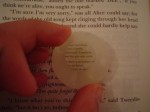| tags: [ science demos ]
Weird Glass
For four summers, I broke glass at the Corning Museum of Glass and explained the science of it. I also showed sample of glass with special properties, which I will share here.
Glowing Glass.
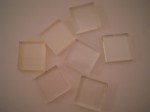
These glass squares look plain and unremarkable. But under ultraviolet light, they become brilliantly colored: red, orange, yellow, green, blue, and purple. Each square is doped with a chemical that fluoresces under UV light, producing a vibrant rainbow. That is, the glass absorbs energy from incoming UV light and reemits that energy as light of a different, visible color. These glass squares were made by an expert in this sort of chemical trickery, Dr. Matthew Dejneka.
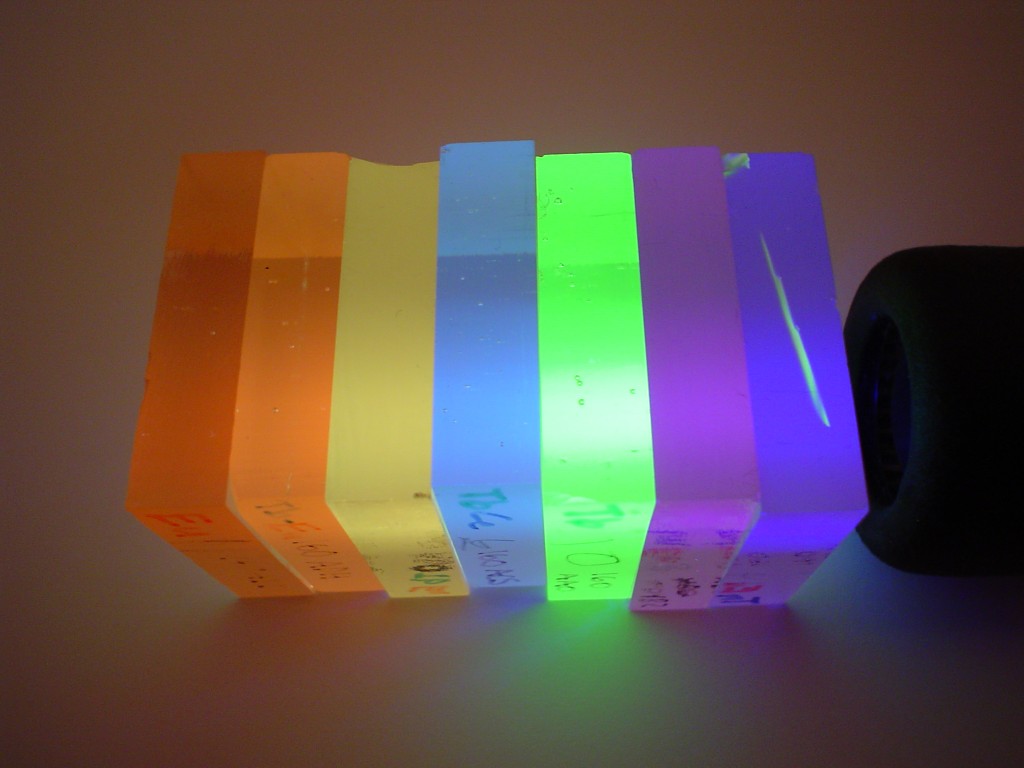
The flashlight itself has four ultraviolet LEDs. To our eyes, it looks dim and vaguely purple, but it is extremely bright in the UV range outside human perception.
Taper Magnifier
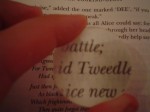
A magnifying glass works by bending the light reflecting from an object to create a larger image. This “taper optic” works in a totally different way. Notice how it is different from a magnifying glass:
- A magnifying glass distorts the image, especially around the edges. The taper optic’s image is flat.
- A magnifying glass has to be held just to get the words into focus. The taper optic sits flat on the page. Words look as if they are written in large print directly on the glass.
- A magnifying glass focuses a bright spot at the center of its view and it darkens the rest. The taper optic illuminates its subject evenly.
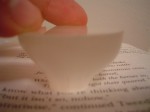
What is it?
It is bundle of tiny glass fibers that have been carefully fused together into a solid chunk of glass. The fibers are thin toward the bottom and thicker toward the top. Each fiber carries a piece of the image and spreads it out on the top surface, enlarging the view. (It’s a two-way street: Fibers also carry light down, concentrating all the light that falls onto the top surface into a small area on the page, making the page a little brighter.)
Why haven’t these replaced magnifying glasses?
They are too expensive. A good-sized one is in the $80 range, and as of this writing they are not manufactured by anyone. I got mine by emailing the inventor, Harvard Professor Eli Peli. Mine is slightly marred, but it came free for educational use!
What happens if you flip it up side down?
